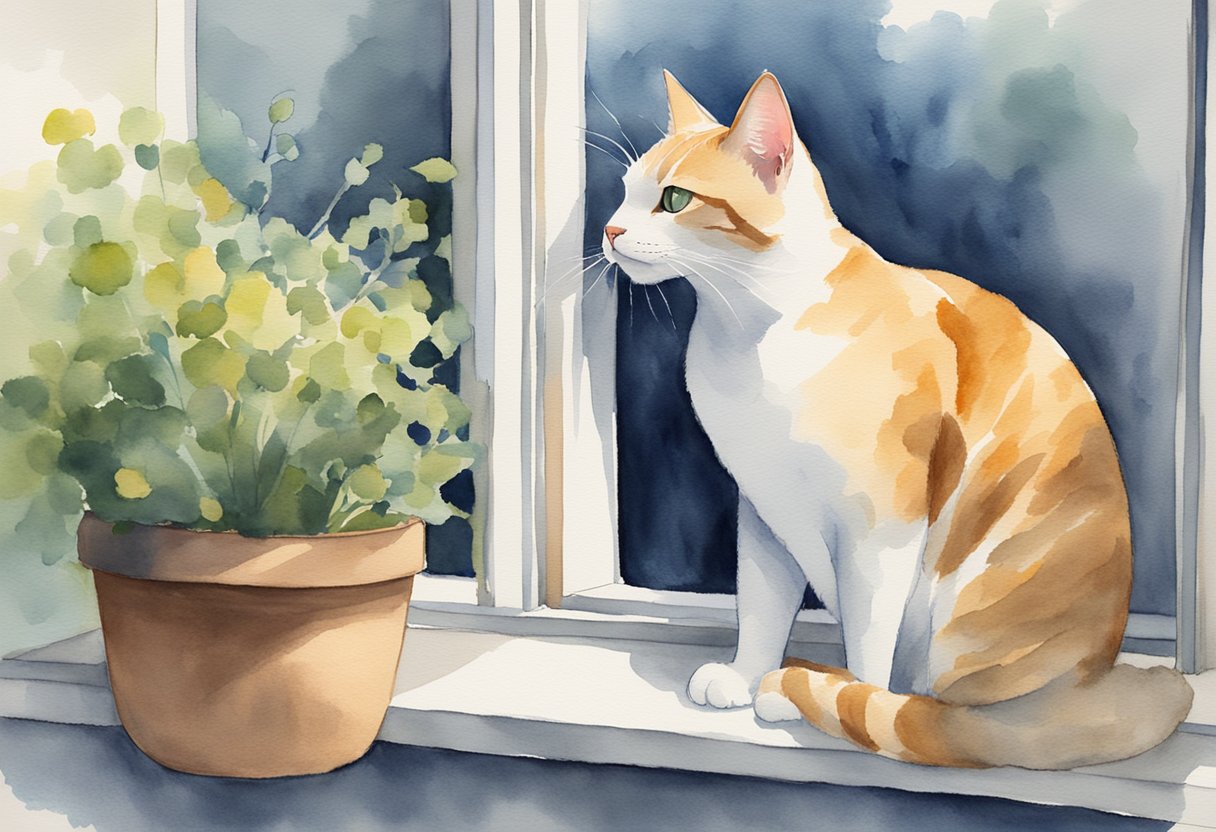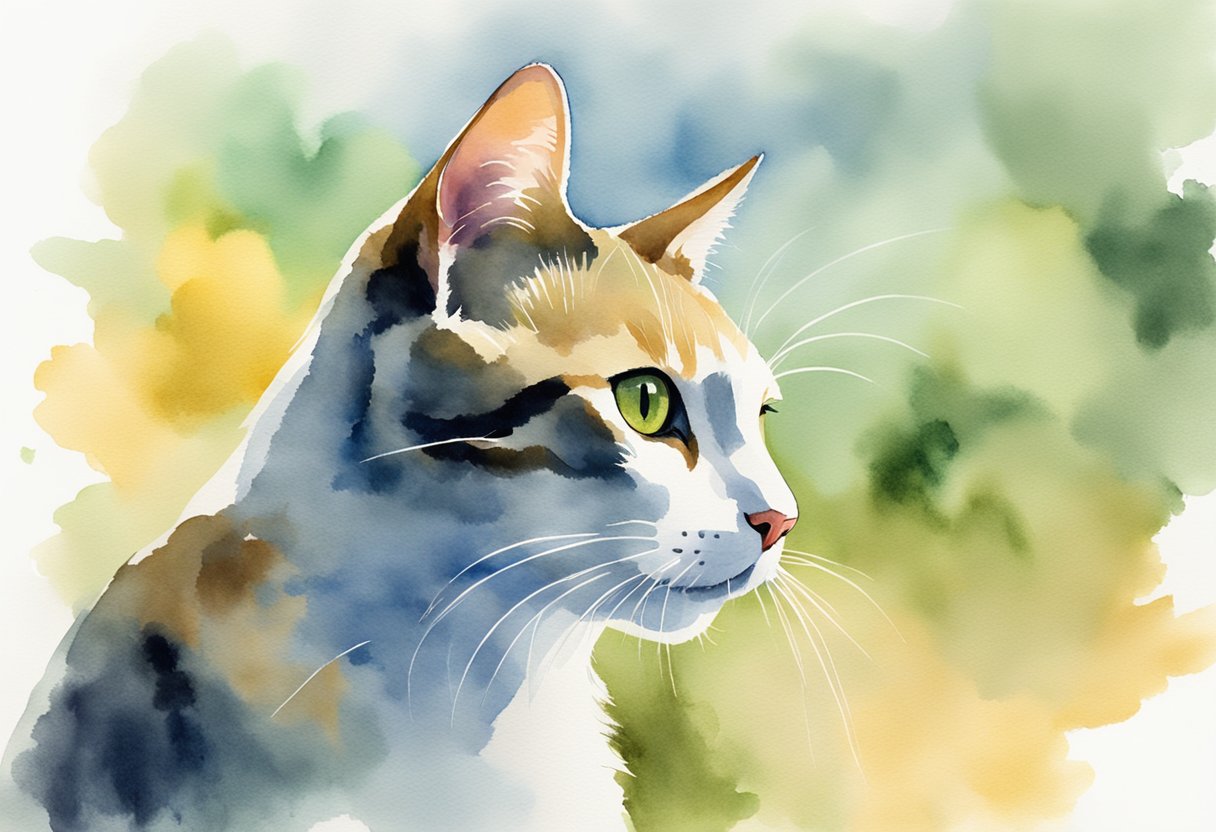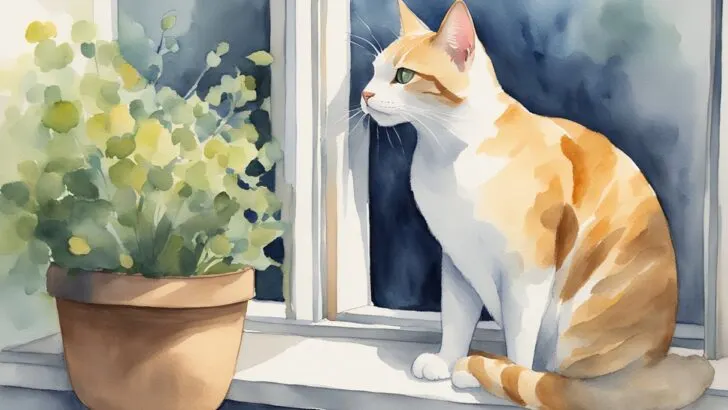Your cat’s vocalizations with you are truly a sign of your special bond. It’s common for cats to choose one person to communicate with more frequently, and a range of different meows can mean everything from “feed me” to “I love you.” When your cat meows at you and not at others, it’s often because they consider you their primary caregiver and have learned that you’re the most responsive to their needs.

Some cats have a whole repertoire of sounds for different occasions – a high-pitched meow for hello, a throaty murmur when they’re hungry, or a sharp yowl when startled or distressed.
This vocal communication is honed from kittenhood, shaped by the responses they receive from humans, and refined over time to get specific reactions from you.
You may notice your feline friend is more talkative when you first come home, which can be their way of greeting you, or when their food bowl is empty, as they’re asking for a meal. Cats are observant creatures and will quickly learn what sounds elicit attention, food, or play from you.
So, when your cat is being selectively vocal, it’s an indication that they view you not only as a source of comfort and sustenance but also as someone who understands their unique ‘language’.
A Look At Cat Vocalizations

Cats communicate with us through an array of vocalizations that can indicate everything from hunger to fear. As a cat owner, tuning into these sounds can help you better understand and care for your feline friend.
Exploring Reasons for Vocalization
Cats meow for various reasons, often to communicate with humans. As kittens, they meow to their mother when in need of attention, but adult cats typically reserve their meows for their human companions.
The reasons can be as simple as greeting you, or as urgent as expressing hunger, thirst, or even illness. Meowing can also be a sign of contentment or anxiety. Pay attention to the circumstances and their body language to better interpret their needs.
- Hunger or Thirst: A persistent meow before feeding times
- Greeting: A short, cheerful meow upon seeing you
- Illness or Discomfort: Continuous meowing or changes in vocalization pitch
- Stress or Anxiety: Mixed signals with body language and vocal sounds
Patterns in Kitten and Adult Cat Behavior
Kittens vocalize frequently, calling out to their mother for feeding or when in distress. As they grow into adult cats, the frequency may lessen, but they develop a tailored set of sounds for communication.
Adults may chirp and trill when they’re happy or excited, and hiss or growl in fear or aggression. Monitoring these patterns from kittenhood can give you insights into your cat’s personality and behavior.
| Age Stage | Vocalizations |
|---|---|
| Kitten | Frequent meows for attention, feeding, comfort |
| Adult | More nuanced sounds for specific communication |
Breeds and Their Vocal Tendencies
Certain breeds are naturally more vocal. For instance, Siamese cats are known for their loud and low-pitched meows which are part of their unique personality. On the contrary, some breeds are known to be quite quiet.
- Vocal Breeds: Siamese, Burmese, Bengal
- Quiet Breeds: Scottish Fold, Russian Blue, American Shorthair
Responding to Your Cat’s Vocals
When your cat directs their vocals specifically at you, they’re often seeking your attention or trying to communicate a specific need.
Interpreting and Addressing Cat Calls
Your cat’s meows, purrs, and trills are all part of their vocal communication repertoire, each with its own meaning. A short meow might signal a greeting, while a series of meows could indicate eagerness for your attention or for mealtime.
Respond to meows with gentle interaction or by checking their food and water bowls. If they purr, they’re likely expressing contentment and solidarity, often seeking affection. Give them some cuddles or a warm lap to sit on.
Trills usually signify a friendly hello or request to play, so consider engaging them with their favorite toy.
Health and Wellbeing Considerations
Changes in vocalization patterns can be a sign of health issues. If your cat is suddenly more vocal or their meow changes in tone, it could indicate discomfort or illness.
Common health concerns associated with increased vocalization are overactive thyroid, kidney disease, or senility in older cats. Always consult a veterinarian if you notice changes in your pet’s behavior or health, including excessive meowing or yowling.
Improving Communication with Your Cat
Understanding your cat’s vocal cues is key to improving communication. Positive reinforcement, such as treats and praise, helps when they communicate appropriately. On the flip side, avoid punishment, which can lead to fear and distrust.
Neutered cats tend to be less vocal, so ensure your cat is neutered to potentially reduce excessive meowing. If your cat seems to meow for no reason, consider therapy toys that stimulate them mentally and curb the need for constant vocalization.

My name is James, and welcome to FAQCats!
Along with our team of cat owners, expert pet enthusiasts, and pet professionals, we aim to write engaging helpful, engaging content about cats. At FAQCats we strive to provide content that’s accurate and fun to read. Our team writes about everything related to cats; even the most complex of topics. Through extensive research and caring for our own fur-pals, we’re able to provide something cat owners worldwide will love. Have a look around, and leave us feedback anytime!

